- October 20, 2023
11 Black Footed Ferret Facts You Need To Know

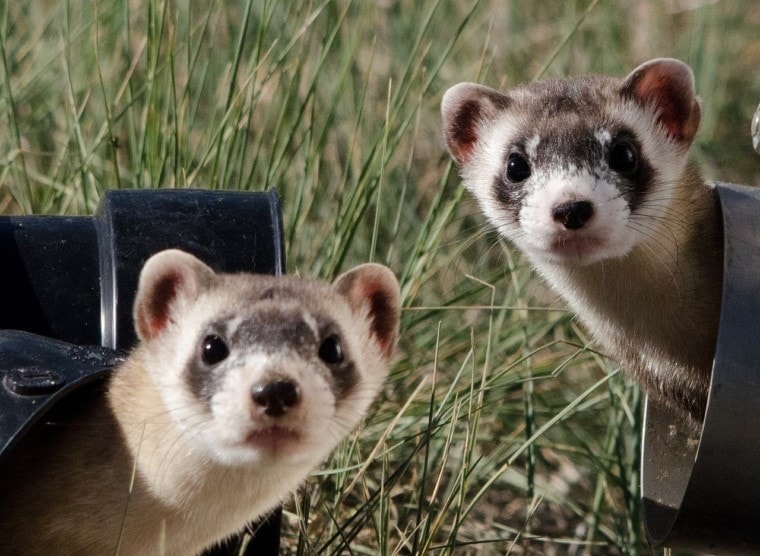
Ferrets are interesting animals and popular pets in the United States. There are several species of ferret, but only the Black-Footed ferret is native to North America. If you’re interested in finding out more about the Black-Footed ferret, including their size, how they live, their food of choice, and other fascinating facts, the information below will be just what you’re searching for.

At the start of the 1900s, it’s estimated that 5 million Black-Footed ferrets lived in the United States. Their territory included most of the American Midwest and Southwest, Including Arizona, Colorado, Kansas, Montana, Nebraska, New Mexico, North Dakota, Oklahoma, South Dakota, Texas, Utah, and Wyoming.
According to the US Fish and Wildlife Service1, you could also find Black-Footed ferrets as far north as Saskatchewan, Canada, and as far south as Chihuahua, Mexico. In other words, Black-Footed ferrets were seen in the Americas in huge numbers at the turn of the 20th century.
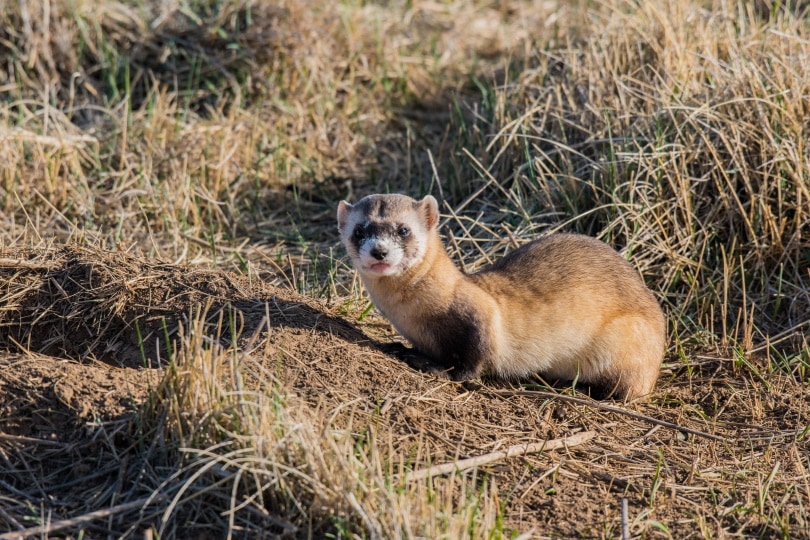
Unfortunately, the Black-Footed ferret is on the endangered species list today, and very few are alive in the wild. Fewer than 500 Black-Footed ferrets live in the wild, mostly in Arizona, Colorado, Montana, South Dakota, and Utah. Indeed, the only reason there are any Black-Footed ferrets anywhere in the U.S. is due to the massive efforts of the Nature Conservancy.
Unfortunately, in Canada, the Black-Footed ferret is listed as extirpated. That word, one that strikes fear in the hearts of conservationists, means that they are extinct. The International Union for the Conservation of Nature (IUCN) classifies the Black-Footed ferrets as endangered and lists them on their Red List.
The Black-Footed ferret is a carnivore, which means that they mainly eat meat. What’s fascinating about these small carnivores is that they survive primarily by eating prairie dogs, and prairie dogs make up about 90% of the Black-Footed ferrets’ diet. It’s estimated that a single Black-Footed ferret will eat upwards of 90 prairie dogs in a single year!
Because they eat prairie dogs, Black-Footed ferrets typically live in or near prairie dog colonies, where they are well adapted to finding and killing them with their strong jaws and sharp teeth. Without prairie dogs, a Black-Footed ferret will eat small rodents, including ground squirrels, rabbits, and the occasional bird. They will also eat bird eggs and small reptiles if the opportunity arises.
4. Black-Footed Ferrets Are Nocturnal and Solitary
Except for the mating season, Black-Footed ferrets are solitary animals. Male Black-Footed ferrets will fiercely defend their territory from other males. Black-Footed ferrets, like most, are nocturnal and most active after dark.
You can occasionally spot a Black-Footed ferret outside of their burrow at dawn and dusk, but it’s very rare to see them above ground in the heat of the day. During the winter months, Black-Footed ferrets reduce their activity substantially and often stay underground in their burrows for a week or longer.
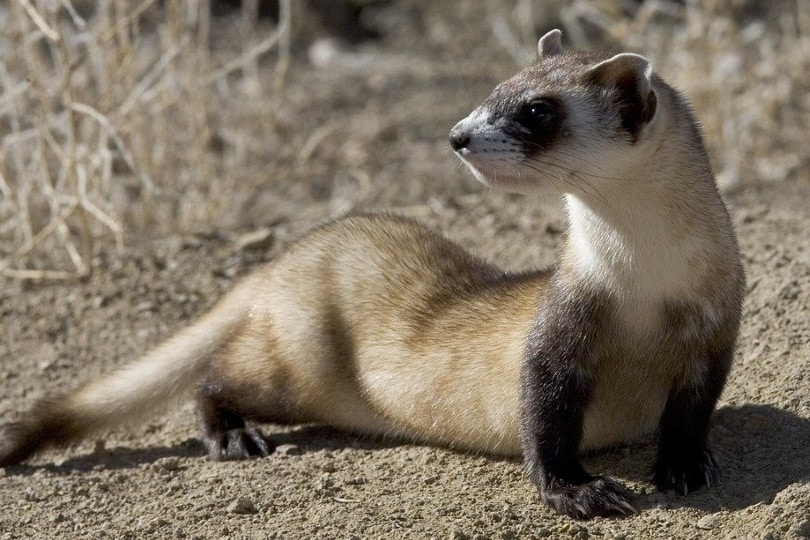
We mentioned earlier that the Black-Footed ferret is on the endangered species list because their numbers in the wild are exceedingly low. However, it’s important to note that their numbers dropped precipitously due mainly to the concerted efforts of ranchers and farmers, who were killing prairie dogs by the millions.
Not only were prairie dogs being killed because they were considered an agricultural pest, but due to farming, the prairies where prairie dogs once roamed have been converted to croplands and developed into communities.
Amazingly, a group of seven breeding Black-Footed ferrets were used to re-introduce and reestablish the species in the wild. It all happened back in 1981. Although they were believed to be extinct then, a small number of Black-Footed ferrets were found living in Wyoming. A rancher’s dog named Shep found them.
In 1983, 49 Black-Footed ferrets were released back into the wild in Wyoming. During the ensuing years, another 147 Black-Footed ferrets were released in the Conata Basin of South Dakota, where they had existed in large numbers before. Today, approximately 70% of the wild black-footed ferret population in the U.S. still lives in the Conata Basin in Wyoming.
At that time, only 18 had survived an outbreak of sylvatic plague. The sylvatic plague, spread by fleas, is deadly for prairie dogs and, unfortunately, for Black-Footed ferrets. Most of the population that conservationists had worked hard to bring back from almost inevitable extinction perished. The few that remained were, at least for a time, considered some of the rarest mammals on the planet.
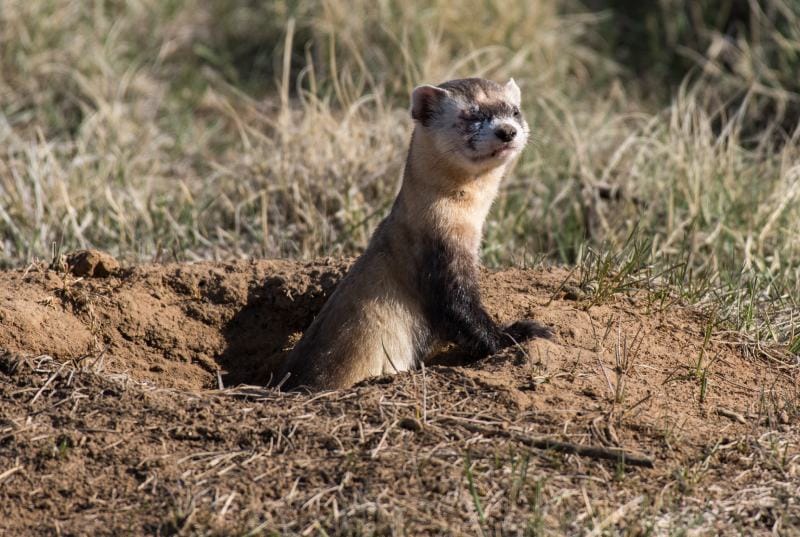
Incredibly, the Black-Footed ferret has looked extinction in the eye three times and still survived. In 2008, after being re-introduced into the wild by conservationists, the sylvatic plague once again struck the wild Black-Footed ferret colonies.
Conservationists again came to the rescue, and although many of the Black-Footed ferrets died due to the plague, enough survived that they have a stable (but tiny) population today.
9. The Black-Footed Ferret Has Non-Retractable Claws and Strong Jaws
One of the reasons that the Black-Footed ferret is so adept at killing prairie dogs is due to their non-retractable claws. Unlike cats, who can retract or extend their claws when needed, the Black-Footed ferrets’ claws are permanently extended. They also have powerful jaws for an animal of their size, which are certainly required since prairie dogs are typically 25% larger than ferrets. Prairie dogs usually average about 3 pounds, and the Black-Footed ferret weighs 1.5 to 2 pounds.
A female Black-Footed ferret typically has a litter of three to five kits. They are born blind and helpless and covered in fine white fur. After about 3 weeks, the kits begin to develop their distinctive markings, and their eyes open at about 4 weeks. However, baby ferrets stay underground until they reach about 42 days of age. Most kits stay with their mothers until late fall of the same year they were born. They then go off to live their solitary life and only come together again at mating time in early spring each year.
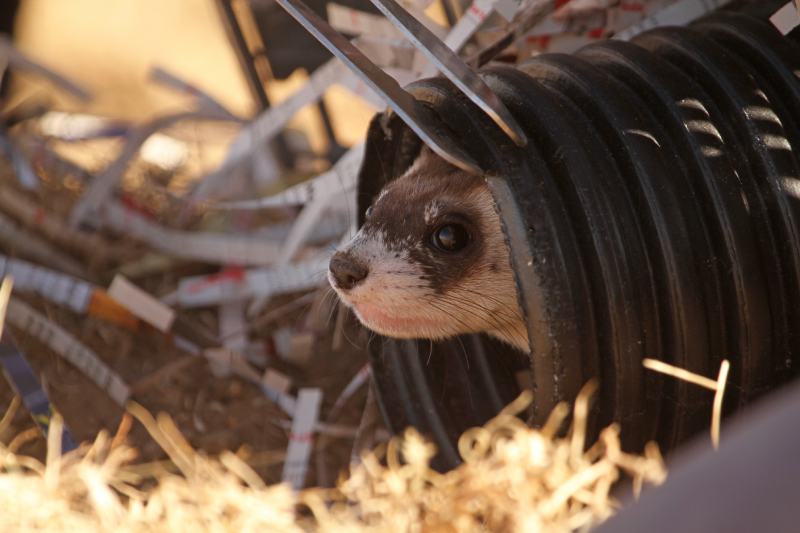
Because of the significant size and strength difference, it’s not unusual for Black-Footed ferrets to hunt sleeping prairie dogs. This lessens the chance of a fight that the Black-Footed ferret probably won’t win. To kill their prey, the ferret will use their powerful jaws and sharp teeth to bite the back of the prairie dog’s neck, killing it almost instantly.

Final Thoughts
Since they were brought to the brink of extinction twice (and accidentally declared extinct once), the Black-Footed ferrets are survivors. They’re also the only ferret species native to the Americas. Today, this playful but deadly (at least to prairie dogs) member of the mustelid family numbers less than 500 in the wild. Their numbers, however, are stable, and they survived thanks to the help of conservationists (and a curious rancher’s dog named Shep).
Featured Image Credit: skeeze, Pixabay
Tags
What do you think?
Related Articles

New Puppy Checklist: Gear You’ll Need for Your New Dog
Getting a new puppy is really exciting, but before you welcome them home, it’s important to prepare your space for them. Since puppies need a

How Big Do Mini Poodles Get? Vet Reviewed Average Weight & Growth Chart – Dogster
The information is current and up-to-date in accordance with the latest veterinarian research. Learn more » When you buy a Miniature Poodle, you might not

Can Police Dogs Smell Nicotine? Vet Verified Facts & Info – Dogster
The information is current and up-to-date in accordance with the latest veterinarian research. Learn more » While cigarette sales have been declining steadily for decades,

How Old Is 5 in Dog Years? Vet-Approved Guide to Each Size of Dog – Dogster
The information is current and up-to-date in accordance with the latest veterinarian research. Learn more » A common method for calculating a dog’s age is

